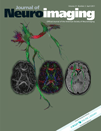Cerebral Microbleeds Are Uncommon in Ischemic Stroke Associated with Nonvalvular Atrial Fibrillation
J Neuroimaging 2011;21:103-107.
Abstract
ABSTRACT
BACKGROUND AND PURPOSE
Patients with cardioembolic ischemic stroke from nonvalvular atrial fibrillation (NVAF) are candidates for long-term anticoagulation. This study examines the prevalence of cerebral microbleeds (MBs) in stroke patients with NVAF.
METHODS
A total of 132 consecutive ischemic stroke patients with NVAF admitted to our Stroke Unit were recruited if complete magnetic resonance (MR) imaging studies including T2* imaging had been performed within less than 72 hours. National Institutes of Health Stroke Scale scores were documented and cerebrovascular risk factors were monitored.
RESULTS
Among 132 patients (mean age 74.1 ± 9.8 years), only 9 (6.8%) had MBs (mean number 6.2) as detected on T2* MR images. No statistically significant differences between patients without versus with MBs were observed regarding arterial hypertension, diabetes, hyperlipidemia, and coronary heart disease. However, small vessel disease (SVD) was significantly more frequent in patients with MBs than without MBs (44.4% vs. 12.2%; P < .05) and significantly more patients with MBs experienced repeated strokes (44.4% vs. 14.6%; P < .05).
CONCLUSIONS
In contrast to studies reflecting a high incidence of MBs in stroke patients of various subtypes, MBs occurred less frequently in patients with cardioembolic acute ischemic stroke associated with NVAF. In patients with severe SVD or repeated cerebrovascular events, special caution should be taken regarding oral anticoagulation.




